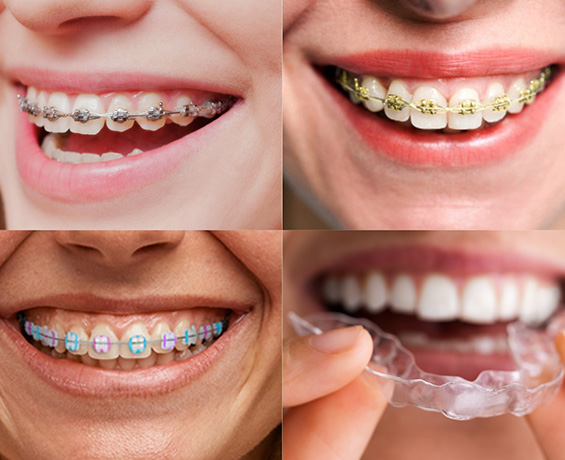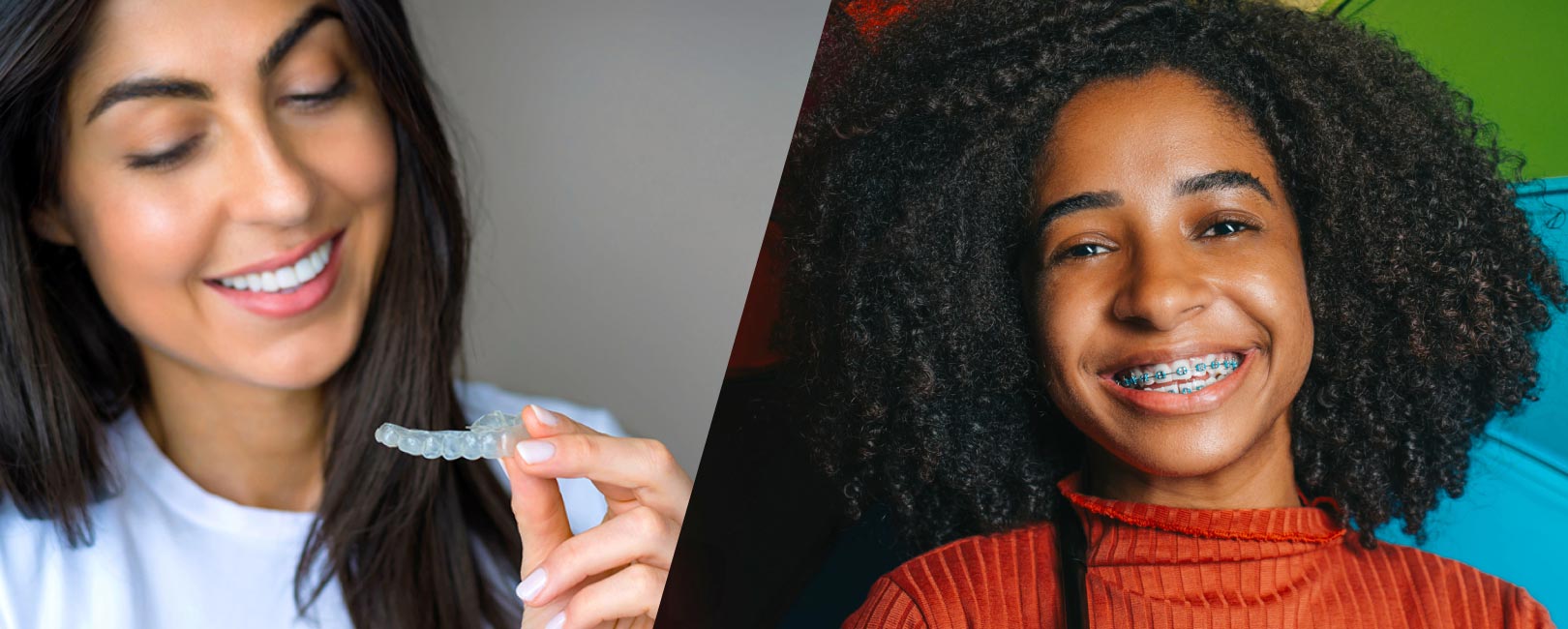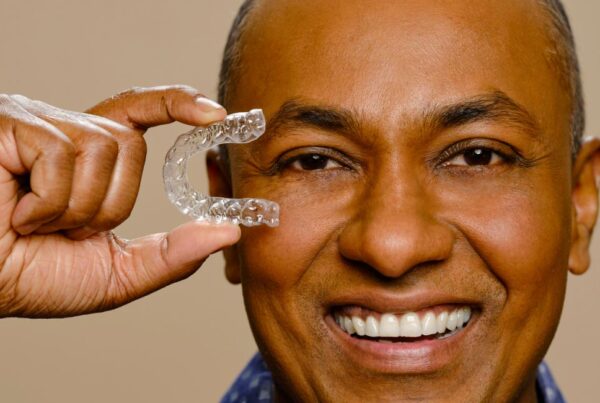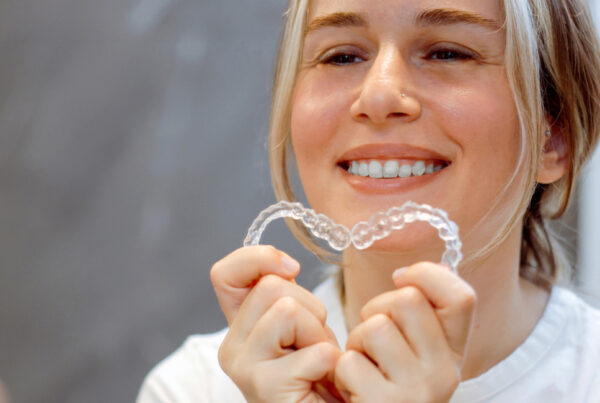Deciding between Invisalign® and traditional braces can be a tough call, especially when determining which treatment best suits your lifestyle and oral needs. Whether you’re looking for a discreet option or a time-tested solution like braces, it’s important to weigh your choices carefully.
In this blog, we’ll break down both options in detail and compare their features to help you make the most informed decision for your smile.
So, here’s the big question: Does Invisalign® actually work? In this blog, we’ll give you a clear understanding of Invisalign® treatment so you can decide if it’s the right choice for you.
Invisalign® Aligners vs. Braces: Breaking Down the Key Differences
When considering your options on what treatment you should pick, it’s essential to compare both options across several key areas. From cost to comfort, we’ll explore how each method stacks up to give you a clearer understanding of what to expect.
Price
The cost of Invisalign® and traditional braces can vary depending on a lot of factors, such as the complexity of your case and your location. Clear aligners like Invisalign® tend to cost slightly more due to the custom-made materials and treatment fees.
Keep in mind that your total cost may differ based on how long your treatment lasts and any additional procedures that you might need depending on your orthodontic condition. Now, cost can be a major concern for many when it comes to orthodontic treatment. You may opt to have orthodontic insurance, which often covers some portion of the treatment, particularly for children and teens. However, if you’re not eligible for orthodontic treatment through insurance, many orthodontists may offer flexible payment plans and other financing options to make orthodontic treatment within reach.
Aesthetic Appeal
A crooked smile can ruin your confidence. Oftentimes, depending on your condition, you may need braces or Invisalign treatment to fix your smile. And of course, aesthetics play a huge role in choosing between the treatment options.
Traditional braces are very visible, especially when metal brackets are used. While you can opt for ceramic braces that blend more naturally with your teeth, they still stand out compared to Invisalign®.
On the other hand, Invisalign® aligners are nearly invisible, making them an attractive choice for those who don’t want to draw attention to their teeth and want a more subtle look. If discreetness is a priority for you, Invisalign® is likely the better choice as the aligners are clear and fit snugly over your teeth.
Comfort
When it comes to comfort, many patients find Invisalign® to be more manageable than traditional braces. Braces can cause irritation to the inside of your mouth due to the metal brackets and wires, especially in the early stages of treatment or after adjustments. These sharp edges can lead to discomfort and even sores inside your cheeks or lips.
Invisalign®, however, is made of smooth plastic which generally feels more comfortable against your gums and cheeks. You might experience slight discomfort when you switch to a new set of aligners, but it tends to be less intense than the pain some experience with traditional braces.
Effectiveness & Speed
Both Invisalign® and traditional braces are FDA-approved and can effectively treat a range of orthodontic conditions. However, the duration of treatment and its effectiveness can depend on your specific situation.
For less complex orthodontic conditions, Invisalign® is just as effective as braces, and, sometimes, it can offer a faster treatment time. Typically, Invisalign® treatment takes about 12 to 18 months, though it can be as short as six months for simpler cases.
Traditional braces, on the other hand, generally require one to two years for full results depending on the condition. While braces address a wider variety of conditions such as severely rotated teeth or major misalignments, Invisalign® may not be the best solution for more complex cases.
Eating
Eating with braces can be a challenge. You’ll need to avoid certain hard or sticky foods as they can damage the brackets or wires. Chewy foods like caramel, popcorn, and nuts can get stuck in them and/or break your braces. Plus, after every adjustment, you may find it uncomfortable to eat certain foods, especially within the first few days.
Invisalign® shines here and offers a major advantage when it comes to eating. Since aligners are removable, you can simply take them out before meals and enjoy your food without restrictions. Afterward, you’ll just need to brush your teeth and pop the aligners back in. This added convenience is one reason many people are more inclined to pick Invisalign®.
Care & Cleaning
Cleaning braces can definitely be time-consuming. You’ll need to brush carefully around the brackets and wires, and it’s easy for food to get stuck in places that are difficult to clean. You might have to purchase a different brush and some special tools, such as floss threaders, to floss around the braces.
Invisalign® is easier to maintain because the clear aligners can be removed to clean. You’ll simply brush your aligners just as you brush your teeth. But you’ll need to be responsible here as you’ll want to clean your aligners regularly to avoid buildup, but overall, the process is quicker and simpler.
Less Follow-Ups
Getting traditional metal braces involves several appointments. Your orthodontist will first place the brackets on your teeth, then adjust the wires to begin moving your teeth into place. This process is generally more involved due to regular follow-ups required for adjustments and monitoring.
With Invisalign®, the procedure is less intrusive. After taking impressions of your teeth, your orthodontist will design a series of custom aligners that gradually shift your teeth into position. You’ll receive a new set of aligners about every two weeks, and there are typically fewer in-office visits compared to traditional braces.
Which Option Is Best for Me?
Both Invisalign® and traditional braces are highly effective in straightening teeth and addressing a variety of orthodontic conditions like overbites, underbites, and crowded teeth. However, the right choice will typically depend on several factors, including your specific condition, lifestyle, and personal preferences.
If you’re an adult looking for a more discreet option, Invisalign® could be a good choice for you. These clear aligners are virtually invisible, which makes them a popular option for people who are self-conscious about their looks. In addition, because Invisalign® treatment requires fewer visits to the orthodontist, it can be more convenient for those with busy schedules.
However, it’s important to keep in mind that Invisalign® may not be suitable for everyone. For example, if you’ve previously undergone orthodontic treatment, you may not be a good candidate for aligners. Clear aligners are typically more effective for mild to moderate cases of misalignment.

Traditional braces tend to be more effective in complex situations as they can apply consistent force to move teeth into alignment, regardless of the severity of the case. So, if your orthodontic conditions are more complex, braces may be the better choice for you. Some common, complex issues are:
- Severely rotated teeth
- Major overbites
- Significant crowding
- Large gaps between teeth
- Tooth displacement (intrusion or extrusion)
Achieve a Confident, Healthy Smile With Orthodontic Experts
At Orthodontic Experts, we understand that choosing the right orthodontic treatment can be overwhelming. Whether you’re considering Invisalign® or traditional braces, we’re here to help guide you through the decision-making process.
Our team will evaluate your individual needs and recommend the best course of action based on your orthodontic goals and lifestyle. Contact us today to schedule a no-cost consultation and let us help you achieve a confident, healthy smile.
Frequently Asked Questions
Are Braces More Painful Than Invisalign®?
Many patients report that traditional braces tend to cause more discomfort, especially in the first few weeks of treatment and after adjustments are done. This is mainly due to the pressure from the brackets and wires. Comparatively, Invisalign® generally causes less discomfort. The aligners are made of smooth plastic, which means there is less irritation to the inside of your mouth. However, both options may cause mild discomfort as your teeth begin to shift.
Does Invisalign® Have the Same Effect as Braces?
Invisalign® can be just as effective as braces, but it depends on the severity of your condition. For mild to moderate misalignments, Invisalign® is typically just as effective as traditional braces. However, for more complex issues like severely rotated teeth or significant jaw misalignments, braces may provide better, more consistent, and predictable results. Your orthodontist will be able to determine the best suited option for your unique needs.
What are the pros & cons of Braces?
To help you determine if Braces are the right option for you, here’s a list of potential pros & cons:
Braces Pros:
- Suitable for all types of dental issues, including complex cases
- Can be more effective in shifting teeth into alignment in difficult cases
- Requires less patient compliance (since they’re fixed to the teeth)
Braces Cons:
- Visible and may cause aesthetic concerns
- Can be uncomfortable and cause mouth irritation
- Requires more frequent visits for adjustments
What are the pros & cons of Invisalign®?
To help you determine if Invisalign® is the right option for you, here’s a list of the potential pros & cons:
Invisalign® Pros:
- Clear, discreet, and nearly invisible
- Removable, which makes it easier to eat and maintain oral hygiene
- Typically more comfortable with fewer in-office visits required
Invisalign® Cons:
- May not be effective for complex dental cases
- Requires patient compliance (i.e., must be worn for at least 20-22 hours a day)
- Potential for losing aligners or misplacing them
How Long Does Invisalign® Treatment Take Compared to Braces?
In general, Invisalign® treatment takes about 12 to 18 months, though some people may need less time depending on the severity of their orthodontic conditions. Traditional braces often take between 18 months to 2 years to achieve the desired results, but this can vary based on individual factors such as the complexity of the case and the patient’s commitment to wearing their appliances as instructed.
Do I Need Braces or Invisalign®?
The decision between braces and Invisalign® depends on the nature of your orthodontic condition, your aesthetic preferences, and your lifestyle. For minor misalignments, Invisalign® can be a great option. However, if you have a more complex dental condition, braces might be necessary. It’s always best to consult with an orthodontist who can provide a personalized recommendation based on your needs. At Orthodontic Experts, we offer a no-cost consultation to help you make the best choice.
Invisalign® is a trademark of Align Technology, Inc., and is registered in the U.S. and other countries. Any mention of Invisalign® is for educational and informational purposes only, in accordance with fair use principles.










